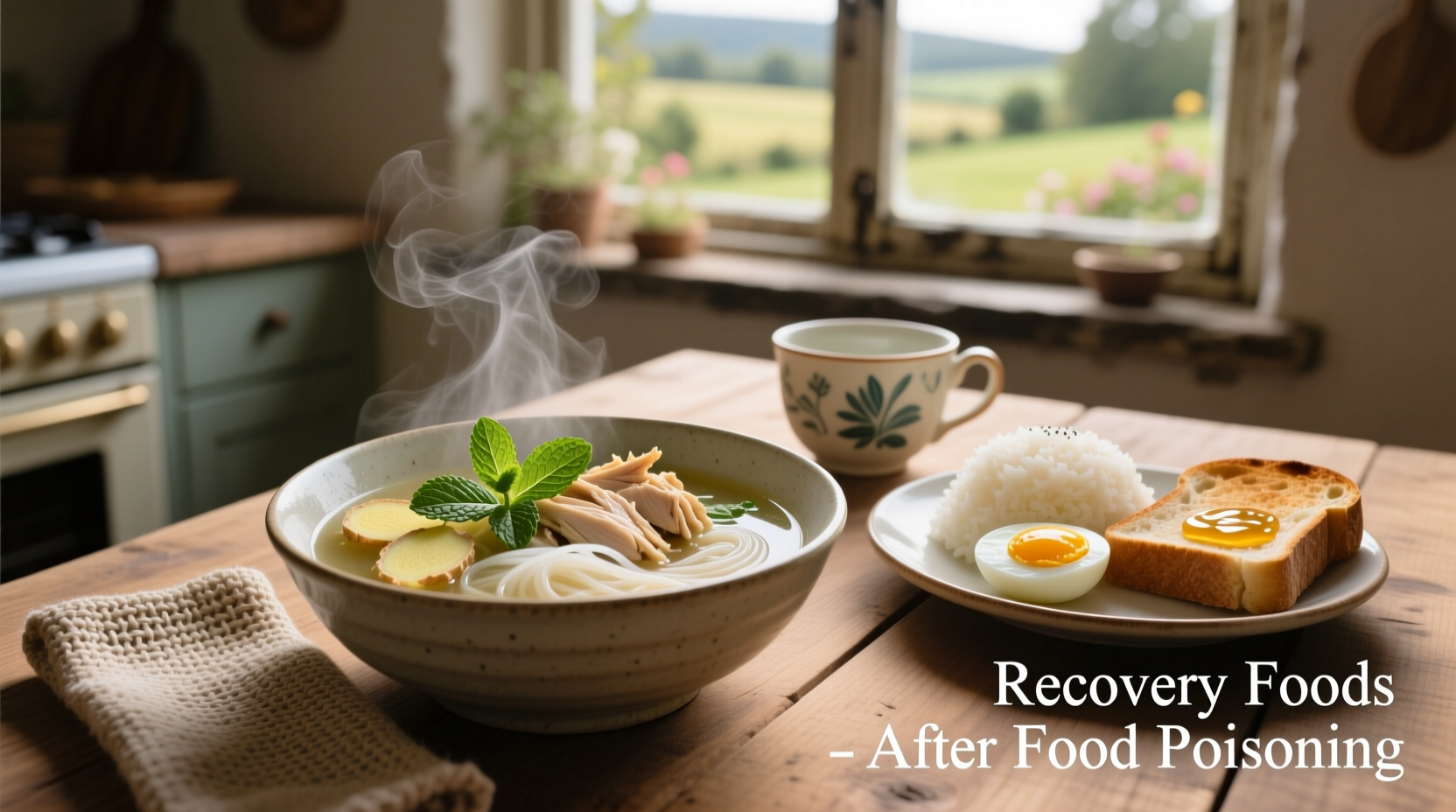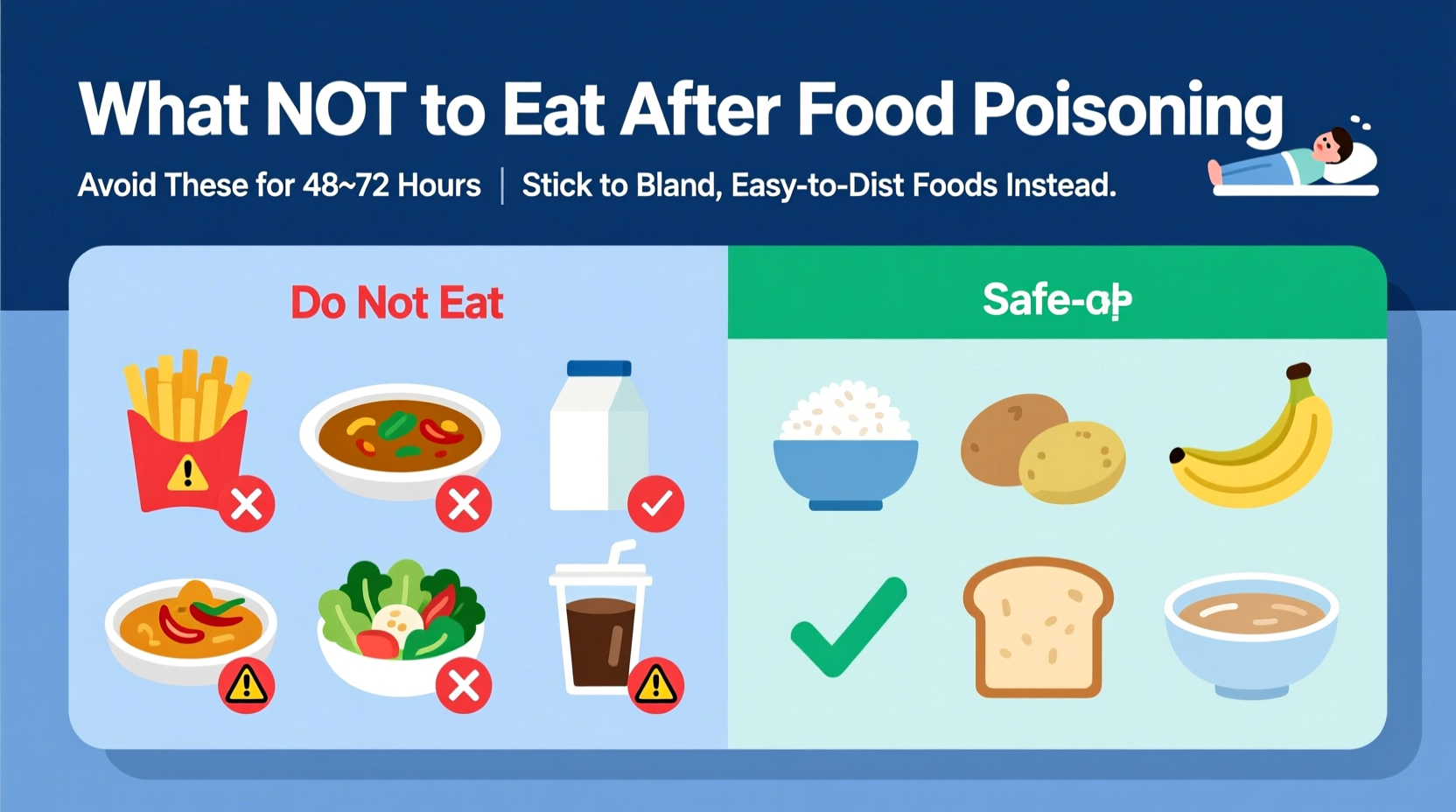When you're recovering from food poisoning, what you choose not to eat matters as much as what you do consume. Your digestive system is already inflamed and sensitive, and certain foods can prolong symptoms or cause further irritation. This guide provides evidence-based recommendations on foods to avoid during each recovery stage, helping you bounce back faster.
Why Certain Foods Worsen Food Poisoning Recovery
During food poisoning, your gastrointestinal tract experiences inflammation and increased sensitivity. The Centers for Disease Control and Prevention (CDC) explains that foodborne illnesses damage the lining of your stomach and intestines, making them less able to process complex or irritating substances. Introducing problematic foods too soon can:
- Stimulate additional stomach acid production
- Increase intestinal motility (causing more diarrhea)
- Create fermentation that leads to bloating and gas
- Delay the healing of damaged intestinal lining
Immediate No-No Foods (First 6-12 Hours)
During the acute phase when vomiting and diarrhea are most severe, your digestive system needs complete rest. The Mayo Clinic recommends avoiding all solid foods until vomiting subsides for several hours. During this critical window, steer clear of:
- Dairy products - Lactose becomes difficult to digest when your gut lining is damaged
- Caffeinated beverages - Coffee, tea, and sodas increase stomach acid and can worsen dehydration
- Alcohol - Further dehydrates your body and irritates the digestive tract
- High-sugar drinks - Energy drinks and fruit juices can draw water into the intestines, worsening diarrhea

Recovery Stage Timeline: What to Avoid When
Food poisoning recovery typically follows a predictable pattern. Understanding this timeline helps you make better food choices at each stage:
| Recovery Stage | Timeframe | Foods to Avoid | Why to Avoid |
|---|---|---|---|
| Acute Phase | 0-12 hours | All solid foods, dairy, caffeine, alcohol, sugary drinks | Allows digestive system rest; prevents additional irritation |
| Early Recovery | 12-24 hours | Fatty foods, spicy dishes, high-fiber foods, acidic foods | These require more digestive effort than your recovering system can handle |
| Middle Recovery | 24-72 hours | Raw vegetables, whole grains, beans, carbonated drinks | Fiber and gas-producing foods can trigger cramping and diarrhea |
| Near Full Recovery | 3-7 days | Very spicy foods, extremely fatty foods, excessive caffeine | Complete healing requires gradual reintroduction of challenging foods |
Foods That Prolong Your Symptoms
Many people make the mistake of returning to their regular diet too quickly. According to NHS guidelines, certain food categories significantly delay recovery:
Fatty and Fried Foods
Burgers, fried chicken, pizza, and other high-fat foods require bile for digestion. When your digestive system is compromised, processing fats becomes difficult, often leading to greasy stools and prolonged diarrhea. The British Nutrition Foundation notes that fat slows gastric emptying, which can increase nausea in recovering patients.
Spicy Dishes
Chili peppers and hot spices contain capsaicin, which stimulates gastrointestinal activity. During recovery, this stimulation can trigger renewed cramping and diarrhea. A 2022 study published in the Journal of Gastroenterology found that capsaicin consumption during gastrointestinal illness recovery extended symptom duration by an average of 1.5 days.
High-Fiber Foods
While fiber is normally beneficial, during food poisoning recovery it can be problematic. Raw vegetables, whole grains, beans, and nuts increase intestinal motility. The Academy of Nutrition and Dietetics explains that insoluble fiber acts like a scrub brush on your already irritated intestinal lining, potentially causing micro-tears and prolonging healing.
Better Alternatives During Recovery
Instead of the foods to avoid after food poisoning, focus on these gentle options:
- BRAT diet foods - Bananas, rice, applesauce, and toast provide binding carbohydrates without irritation
- Electrolyte solutions - Oral rehydration solutions help replace lost fluids and minerals
- Clear broths - Provide hydration and some nutrients without digestive strain
- Boiled potatoes - Easy to digest and provide necessary carbohydrates
- Oatmeal - Soluble fiber helps bind stool once you're past the acute phase
When to Seek Medical Attention
While most food poisoning cases resolve within 48 hours, certain symptoms require immediate medical care. The CDC advises contacting a healthcare provider if you experience:
- Diarrhea lasting more than 2 days
- Signs of severe dehydration (dark urine, dizziness, dry mouth)
- Blood in vomit or stool
- High fever (above 102°F or 39°C)
- Neurological symptoms like blurred vision or muscle weakness
Infants, elderly individuals, and those with compromised immune systems should seek medical advice sooner rather than later, as they're at higher risk for complications from foodborne illnesses.
Special Considerations for Vulnerable Groups
Certain populations require modified approaches to food poisoning recovery. Pregnant women should be particularly cautious about dehydration, which can trigger premature contractions. According to the American Pregnancy Association, they should contact their healthcare provider after just 12 hours of vomiting.
People with diabetes need to monitor blood sugar closely, as dehydration and reduced food intake can cause dangerous fluctuations. The American Diabetes Association recommends checking blood glucose every 3-4 hours during illness and having a sick-day management plan in place.











 浙公网安备
33010002000092号
浙公网安备
33010002000092号 浙B2-20120091-4
浙B2-20120091-4